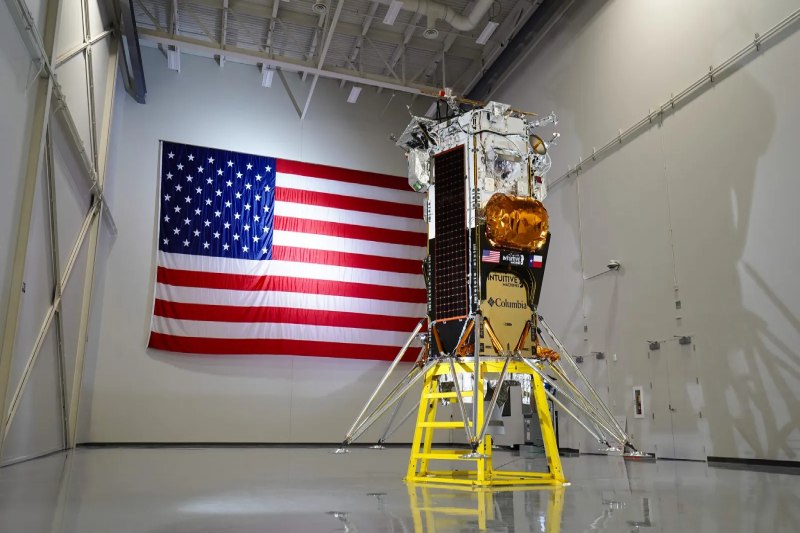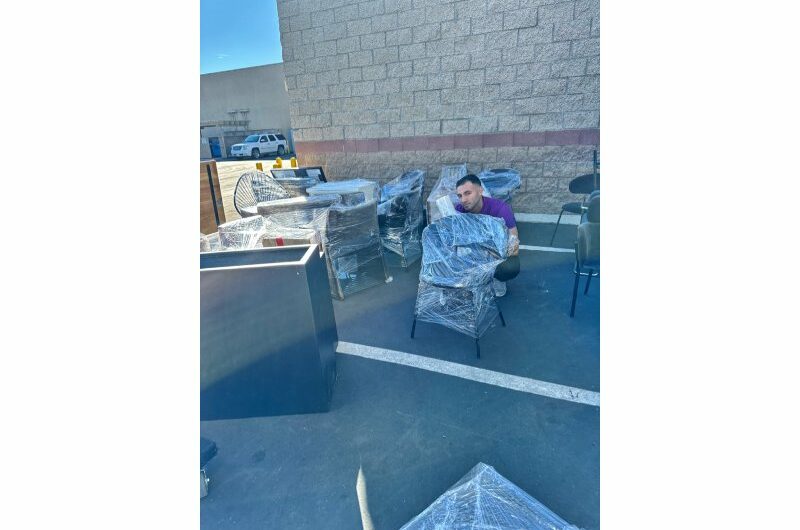One more attempt at the moon in a month.
Early on Thursday morning, a robotic lunar lander was launched into space. If everything goes according to plan, on February 22 it will make history as the first American spacecraft to land softly on the moon since Apollo 17 in 1972.
It would also be the first attempt by a private group to reach the moon’s surface unharmed. Three prior attempts, by an Israeli organization, a Japanese firm, and an American company, were unsuccessful.
Intuitive Machines of Houston, the company leading this project, is hopeful.
“I feel fairly confident that we’re going to be successful softly touching down on the moon,” Stephen Altemus, the president and chief executive of Intuitive Machines, said in an interview. “We’ve done the tests. We tested and tested and tested. As much testing as we could do.”
If commercial enterprises are able to accomplish this at a significantly cheaper cost than a conventional NASA mission, it will pave the way for NASA and other organizations to conduct more extensive lunar exploration.
“We’re trying to create a marketplace in a place where it didn’t exist,” Joel Kearns, an official in NASA’s science mission directorate, said during a news conference on Tuesday. “But to do that, we have to do it in a cost-conscious manner.”
NASA is the mission’s main sponsor, giving Intuitive Machines $118 million to carry its payloads to the moon’s surface, which include a radio receiver to measure the impact of charged particles on radio communications and a stereo camera to watch the plume of dust blown up upon landing. Other clients’ cargo includes an artwork by Jeff Koons and a camera constructed by Embry-Riddle Aeronautical University students in Daytona Beach, Florida.
But NASA won’t be getting its money’s worth if these private initiatives keep failing.
The mission commenced with a seamless and fortunate beginning.
The lander was launched onto a direct course for the moon by a SpaceX Falcon 9 rocket from NASA’s Kennedy Space Center in Florida at 1:05 a.m. Eastern time. Less than an hour later, Intuitive Machines claimed that the spacecraft had successfully turned itself on and detached itself from the rocket’s second stage. Later on Thursday morning, the business announced that the spacecraft is in radio contact with Intuitive Machines’ mission control in Houston, can maintain its orientation in the right direction, and is producing electricity through its solar panels.
“We are keenly aware of the immense challenges that lie ahead,” Mr. Altemus said in a statement. “However, it is precisely in facing these challenges head-on that we recognize the magnitude of the opportunity before us: to softly return the United States to the surface of the moon for the first time in 52 years.”
Intuitive Machines has designed a spacecraft that it calls Nova-C. It is roughly 14 feet tall and 5 feet wide, and it has six landing legs in the shape of a hexagon. According to Intuitive Machines, the lander’s body is about the size of a vintage British police phone booth, or comparable to the Tardis from the science fiction television series “Doctor Who.”
When the lander was launched, its total weight with propellant was around 4,200 pounds.
This specific spaceship was given the name Odysseus following a vote among the staff of Intuitive Machines. The engineer who suggested the name, Mario Romero, claimed that the lunar trip may be compared to the adventures of the protagonist in the classical Greek epic poem “Odyssey.”
“This journey takes much longer due to the many challenges, setbacks and delays,” Mr. Romero said in Intuitive Machines’ press kit for the mission. “Traveling the daunting, wine-dark sea repeatedly tests his mettle, yet ultimately, Odysseus proves worthy and sticks the landing back home after 10 years.”
Odysseus is scheduled to set out on a week-long journey from Earth to orbit the moon, approximately 62 miles above its surface. After that, it will start its engine and start its last descent 24 hours later. It is positioned one hour later, approximately 185 miles from the south pole, close to the Malapert A crater. Because of its relative flatness, the landing spot makes it simpler for spacecraft to touch down.
Due to the presence of water ice, the south polar region—especially the craters that are always in shadow—has drawn attention. The equatorial areas have been the landing sites of previous American lunar expeditions.
Odysseus has seven days to work after landing, or until dusk. It is not intended for the solar-powered lander to withstand the bitterly cold lunar night.
Just one month has passed since Pittsburgh-based Astrobotic Technologies, another American company, attempted to send its lander, Peregrine, to the moon with the launch of the Intuitive Machines mission. However, soon after launch, a propulsion system problem ruled out any chance of landing. Ten days later, Peregrine burned up in the atmosphere above the Pacific Ocean when it swung back toward Earth.
Peregrine and Odysseus are both a part of NASA’s Commercial Lunar Payload Services (CLPS) program. Instead of NASA developing and running its own lunar landers, the program’s goal is to deliver experiments to the moon using private enterprises.
In order to launch more missions more regularly and get ready to send astronauts back to the moon as part of its Artemis program, the space agency hopes that this strategy will be significantly less expensive.
The space agency anticipated that half of the CLPS missions would fail, according to Thomas Zurbuchen, the former assistant administrator for science at NASA who launched the program in 2018. He claimed he had repeatedly advised Congress, scientists, and the corporations to expect that. “It was marketed that way,” he stated in an interview.
However, even if half of these commercial missions fail, NASA would still make money, according to Dr. Zurbuchen, because on a CLPS mission, NASA is paying a business roughly $100 million to fly its payloads, whereas a regular mission would cost $500 million to $1 billion.
A success percentage of even 50% could be overly optimistic. Dr. Zurbuchen stated, “Even if you support that, you have to see if that strategy is working.”
Mr. Altemus, who served as NASA’s director of engineering for six years at the Johnson Space Center in Houston, said that the push to save costs has accelerated innovation at a rate that was not feasible for NASA.
“Innovation that would not have occurred if we had more money and more time,” he said. “If you look at all the milestones leading up to landing on the moon, for all the technical accomplishments that we’ve been able to do for that little bit of money, it’s just amazing.”
Landing is still the hardest part of the mission to do.
Mr. Altemus acknowledged that they had to make choices that increased risks but decreased expenses.
“Have we gone too cheap yet?” stated Mr. Altemus. “Perhaps.”
If this is the case, the CLPS businesses could have to increase the cost of next trips, but they would still be less expensive than what NASA has always done. According to Mr. Altemus, NASA and Congress shouldn’t abandon up on the moon-on-a-budget concept even if Intuitive Machines fails this time.
According to Mr. Altemus, “that’s the only way to really go forward.”
Topics #NASA









